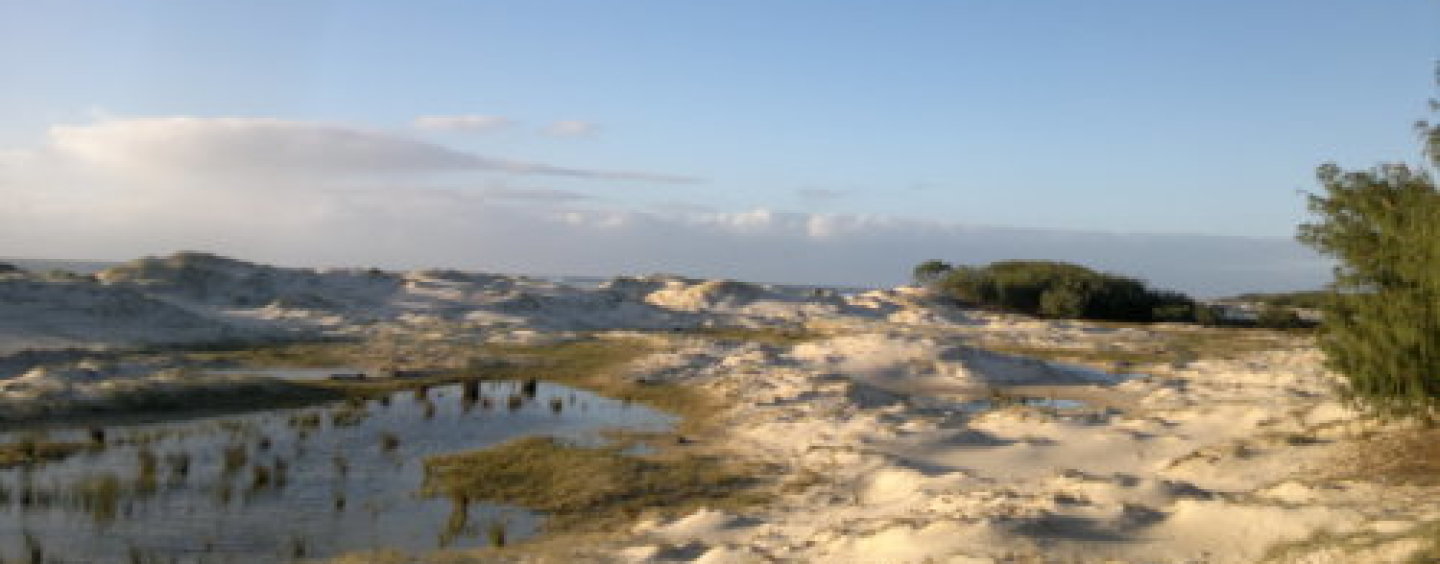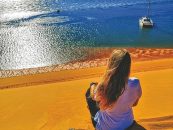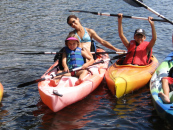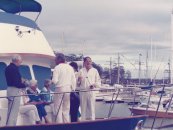Small islands always have that certain charm that is unique. The natural proximity to open waters and the isolation somehow bring us peace of mind and a sense of being in the wilderness.
The Gold Coast is home to islands that boaties are privileged enough to visit at the drop of a hat. South Stradbroke Island is one of them. From a bird’s eye view, South Stradbroke Island appears to hug the golden coastline that protects the glorious Gold Coast and its inhabitants. With the southernmost tip beginning opposite Biggera Waters and slowly creeping north to Crousoe Island over a stretch of 22 kilometers, South Stradbroke Island is an extension of the Gold Coast most enjoyed by boaties. From the amazing lifestyle aspects and dynamics of living on the small island to environmental concerns, the island has an amazing history.
History
Stradbroke Island was one island before 1896. The islands were divided with the breakthrough of the ocean at Jumpinpin in the mid-1880s, when in the morning of September 3, 1894, the barque, Cambus Wallace, ran aground in heavy seas. During the salvage operation, cargo was detonated. Combine this with wild storms and tidal seas, erosion of the sand dunes along the spit of land caused the island to divide into two. After this time period, there became two islands known as North and South Stradbroke Islands, currently under Redland Shire and City of Gold Coast councils, respectively.
Aboriginal people have occupied Stradbroke Island and some of the Bay Islands for the last 6,000 years, at least. The original inhabitants know the island as Minjerribah, meaning island in the sun, in the Quandamooka language. In July 1827, the island was named The Isle of Stradbroke, in honour of Captain Rous, the second son of the Earl of Stradbroke, captain of the ship Rainbow that came to survey the area in the early 1900s.
Environment
South Stradbroke Island is one of only 15 sand islands in the world. It is home to a conservation park encompassing 1800 hectares of land. Unlike North Stradbroke, which has high species and ecosystem diversity, South Stradbroke has lower diversity. It is just a few metres above sea level and only 2.5 kilometres wide.
However, despite its low diversity assessment, the island still requires protection. The South Stradbroke Island Regional Park Management Statement (2015) states, “Marine protected areas of the South Stradbroke Island Regional Park are located within a habitat protection zone and a marine national zone. A habitat protection zone provides for conservation while still allowing reasonable use of the area to occur. A marine national park zone is a ‘no-take’ area and extractive activities like fishing or collecting are not allowed without a permit. Any person wishing to conduct activities in this zone must comply with the Marine Parks Act 2004.”
The document also lists 12 flora and fauna species that are of conservation significance, one of them, the eastern curlew being identified as critically endangered.
Heritage
The Aboriginal people, particularly those with connections to the original Stradbroke Island and the Moreton Bay region (the Kombumerri and Quandamooka peoples) have identified significant relations to South Stradbroke Island. The original residents conducted fishing and other cultural activities in the area. In fact, an Aboriginal shell midden (a pile of discarded shells) sits on the sand dunes at an area known to the boaties as The Bedrooms, according to a local anthropologist and photographer, Michael Aird. He has been documenting the stories of his Aboriginal ancestors through his research, and provides support to the Aboriginal artists through the South Stradbroke Artist Camp held by the Gold Coast City Council annually since 2014.
Recreation
South Stradbroke Island, also known as “South Straddie” or “The other side (TOS)” is a tourist destination and a home to local residents.
The island and its safe surrounding waters and its surfing opportunities are popular among the locals. Its proximity to the mainland and its accessibility on the Broadwater provide a relaxing destination for boaties, while surfers are privileged to enjoy the rolling waves on the ocean side close to the Seaway.
But while the island is more popular as a place to visit for a day-trip or camping, it is worth noting that there are actually more than 100 residents living there (2011 Census). The residents are living “off the grid”, as their water and power supplies are not connected to the mainland. This poses both the challenge and the appeal of living on the island.
There are campgrounds run by the Gold Coast City Council with basic amenities, and a resort with hotel and villa accommodations available for visitors. In the Local Area Plan for the island, the Council has recognised that “[T]here is evidence to suggest that the increasing visitor, vehicle and boat numbers are close to, and possibly already exceeding, the sustainability of the Island’s land and water environment.” Although there is no official statement regarding this problem, it is simply a reminder that users (both residents and visitors) need to be mindful of the island’s environment and cultural values.
The recreational and tourism value of South Straddie cannot be denied. It is an island that still offers an authentic eco-tourism experience. But more importantly, its ecological and cultural values are significant aspects that need equal recognition and protection.
By Roselle Tenefrancia and Paige Mengel






























